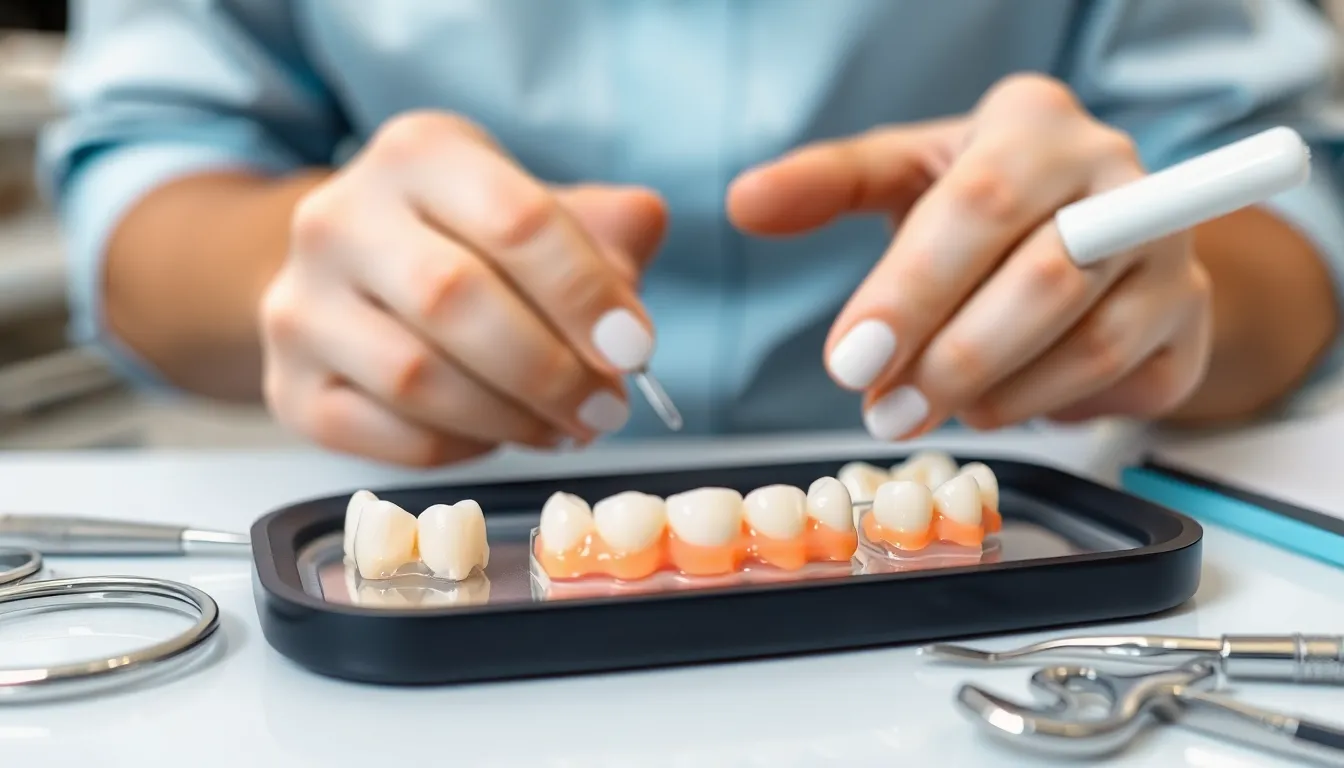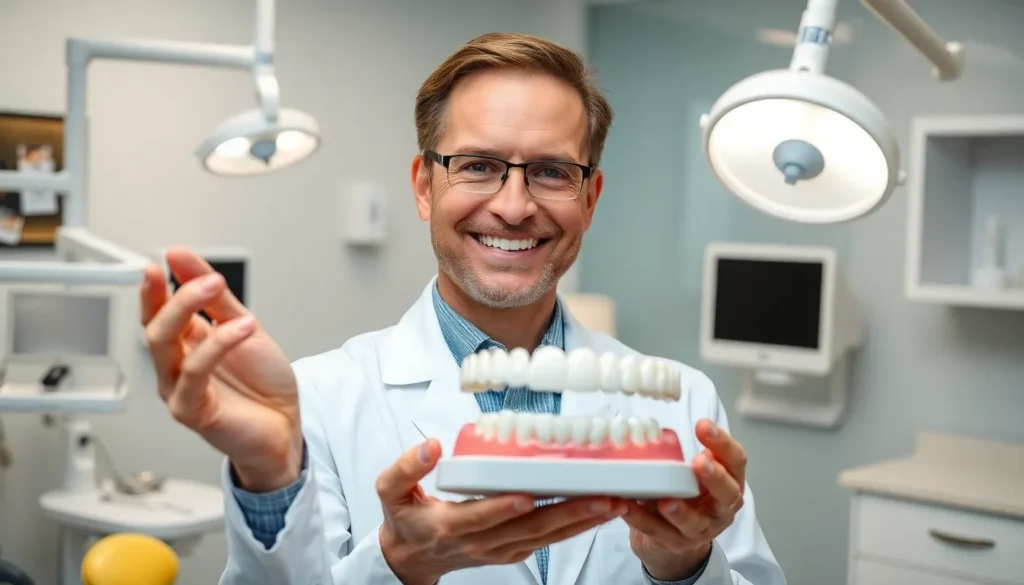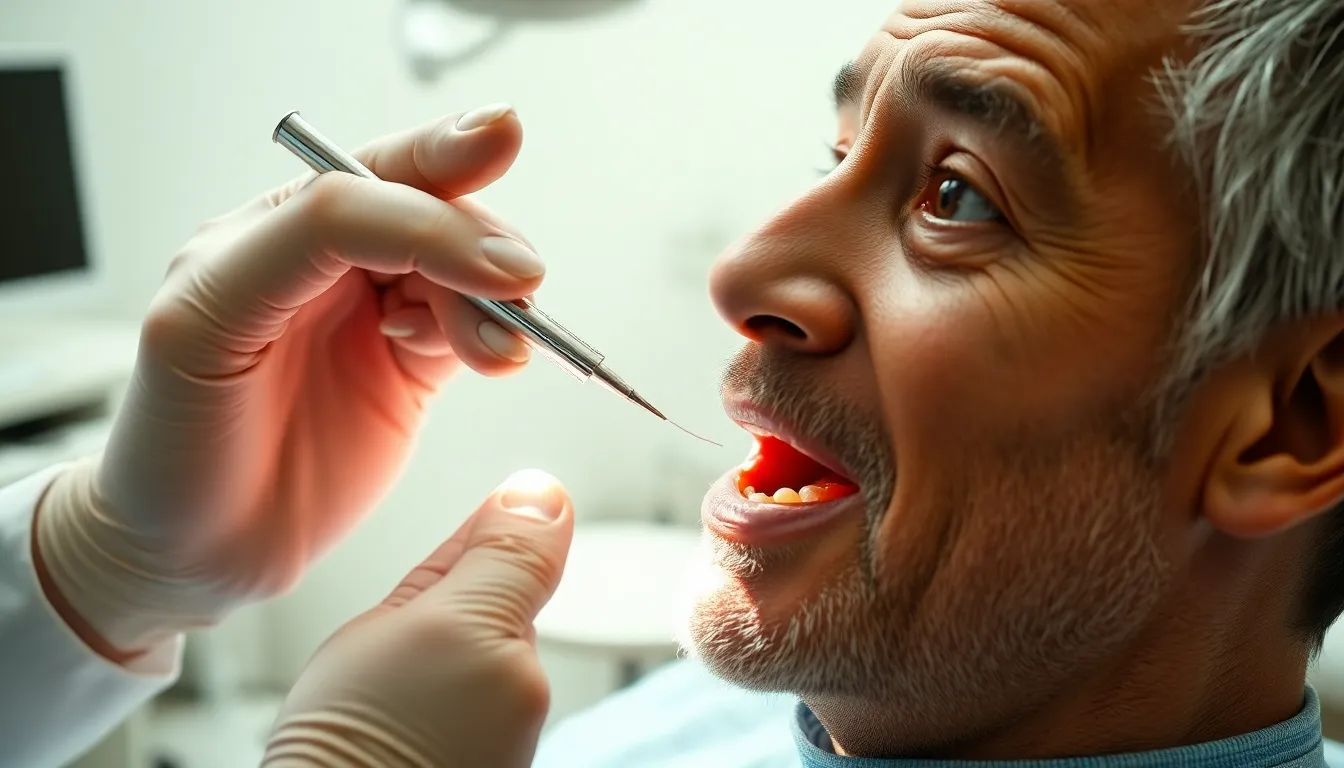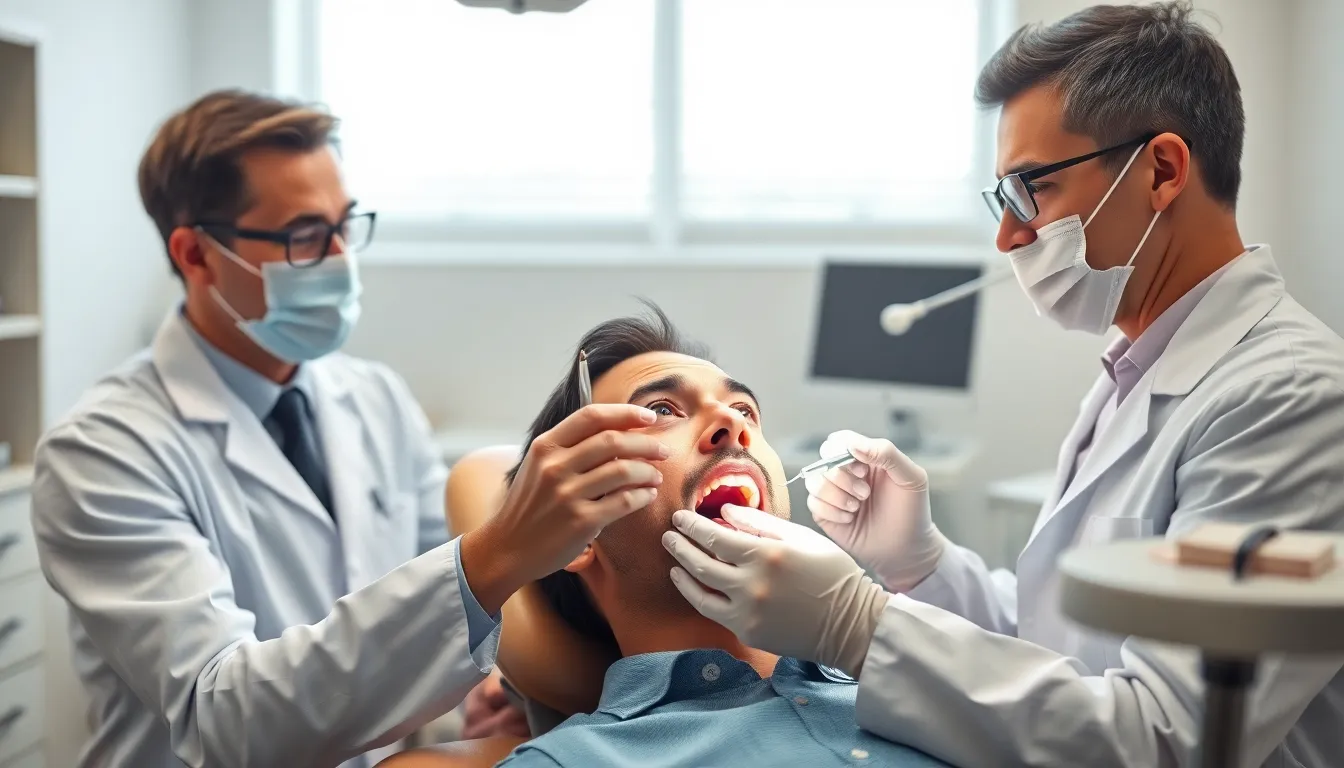Are you looking for a quick smile transformation without the lengthy dental appointments? Press veneers have become a popular alternative to traditional porcelain veneers, offering an affordable way to enhance your smile with minimal preparation.
Unlike traditional veneers that require permanent tooth reduction, press veneers (also known as no-prep or minimal-prep veneers) can often be applied with little to no alteration of your natural teeth. They’re typically made from thin shells of porcelain or composite resin that are bonded to the front surface of teeth to improve appearance. With proper care, these less-invasive options can still deliver impressive results while preserving more of your natural tooth structure.
What Are Press Veneers?
Press veneers are ultra-thin, custom-made shells of porcelain or composite resin designed to cover the front surface of teeth, improving their appearance with minimal alteration to natural tooth structure. These veneers are manufactured using a special pressing technique that creates durable, natural-looking restorations.
Types of Press Veneers
Several types of press veneers are available on the market, each offering unique benefits for different dental situations. Porcelain press veneers provide the most natural appearance and stain resistance, mimicking the light-reflecting properties of natural teeth. Composite press veneers offer a more affordable alternative while still delivering aesthetic improvements and can often be placed in a single appointment. E.max press veneers use lithium disilicate ceramic material, combining exceptional strength with translucency for a lifelike appearance. Lumineers represent one of the most popular brands of ultra-thin veneers, requiring virtually no preparation of the natural tooth. Snap-on veneers serve as temporary, removable options for those wanting to test the veneer look before committing to permanent answers.
Press Veneers vs. Traditional Veneers
Press veneers differ significantly from traditional veneers in preparation requirements and overall approach. Traditional veneers typically require removing 0.5-0.7mm of tooth structure, permanently altering your natural teeth. Press veneers, in contrast, need minimal to no tooth reduction, preserving more of your natural tooth enamel. The placement process for press veneers is generally faster, often completed in just 1-2 appointments compared to the 2-3 visits needed for traditional veneers.
Dr. Todd B. Harris notes, “I’ve seen patients transform from hiding their smiles to confidently showing them off after getting press veneers. One memorable patient, Sarah, had been self-conscious about her smile for years due to slight discoloration and minor gaps. After getting press veneers, she called my office in tears of joy, saying she couldn’t stop smiling at herself in the mirror. These minimally invasive answers truly change lives while respecting the integrity of natural teeth.”
The cost difference is also substantial, with press veneers typically priced 30-50% less than traditional porcelain veneers. Durability varies between the options, with traditional veneers generally lasting 10-15 years while most press veneers have a lifespan of 5-10 years with proper care.
Benefits of Press Veneers

Press veneers offer exceptional advantages for patients seeking smile enhancements without extensive dental procedures. These custom-made dental answers combine aesthetic appeal with practical benefits that make them increasingly popular among those looking to improve their smile.
Aesthetic Advantages
Press veneers transform your smile by effectively concealing imperfections like discoloration, chips, cracks, gaps, and mild misalignments. They’re custom-crafted to match the natural color, shape, and size of your surrounding teeth, creating a seamless smile enhancement that looks completely natural. The high translucency of porcelain press veneers mimics natural tooth enamel, giving them a realistic appearance that’s virtually indistinguishable from natural teeth. Dr. Harris notes, “Many of my patients are amazed at how natural their press veneers look—even they sometimes forget which teeth have veneers and which don’t.”
Durability and Longevity
Porcelain press veneers stand out for their remarkable strength and resilience in daily use. Unlike thinner press-on alternatives, porcelain veneers resist staining from coffee, tea, wine, and other common culprits that typically discolor teeth. These veneers typically last 10-15 years with proper care, making them a worthwhile investment for your smile. They also provide protection for your underlying teeth, preventing further wear and damage to your natural tooth structure. A recent patient of Dr. Harris shared, “I’ve had my press veneers for over 8 years now, and they still look as good as the day they were placed—no staining or chips even though my daily coffee habit.”
The versatility of press veneers allows them to address various cosmetic issues simultaneously, from uneven tooth sizing to minor orthodontic corrections without braces. For those with weakened or eroded enamel, press veneers offer protection while improving appearance, combining functional benefits with aesthetic improvements in one solution.
The Press Veneer Procedure

Press veneers are created using an advanced pressing technique that produces durable, natural-looking porcelain shells. These thin coverings are precisely bonded to the front surface of your teeth to enhance your smile while preserving more of your natural tooth structure than traditional veneers.
Initial Consultation
Your press veneer journey begins with a comprehensive dental consultation to evaluate your oral health and discuss your aesthetic goals. During this appointment, your dentist examines your teeth, takes X-rays, and creates dental impressions to assess your tooth structure and develop a personalized treatment plan. You’ll collaborate with your dentist to select the ideal veneer shape, color, and overall design that complements your facial features and achieves your desired smile transformation.
“Many patients come in thinking they need extensive dental work, but are pleasantly surprised when I show them what we can achieve with press veneers,” says Dr. Todd B. Harris. “One of my patients, Sarah, was hesitant about getting veneers because she didn’t want her teeth to look artificial. After seeing her press veneer results, she couldn’t stop smiling at how natural they looked.”
Preparation and Fitting Process
The preparation phase for press veneers involves minimal tooth reduction compared to traditional veneers. Your dentist removes approximately 0.5 mm of enamel from the front surface of your teeth to accommodate the veneer thickness without adding bulk. Precise impressions of your prepared teeth are then taken and sent to a specialized dental laboratory where ceramic ingots are heated and pressed into custom molds that reflect your exact specifications.
The fabrication process typically takes 1-2 weeks, after which you’ll return for your fitting appointment. Your dentist first checks each veneer for color match, proper fit, and natural shape before proceeding with permanent placement. The bonding process includes cleaning your teeth, applying an acidic gel to create a roughened surface for better adhesion, and using a special dental cement to secure the veneers. A curing light activates the adhesive, creating a strong bond between your teeth and the veneers. Your dentist then polishes the veneers and makes any necessary bite adjustments to ensure optimal comfort and function.
Cost of Press Veneers

Press veneers range from $500 to $2,895 per tooth in the United States, with an average cost of about $1,765. A complete set of 6-8 veneers typically costs between $5,700 and $24,500, averaging around $15,486 for a full smile transformation.
Factors Affecting Price
The cost of press veneers varies based on several key elements that impact your final investment. Material selection plays a important role, with porcelain options commanding higher prices than composite resin due to their enhanced durability and more natural appearance. The number of teeth receiving veneers directly affects the total cost, with most patients choosing 6-8 veneers for a comprehensive smile makeover.
Laboratory fees contribute substantially to pricing, as custom-fabricated veneers require skilled technicians and premium materials. Your geographic location and your dentist’s expertise level also influence costs, with urban areas and highly specialized cosmetic dentists often charging premium rates.
Dr. Todd B. Harris notes, “Many of my patients are surprised to learn that the preparation required for their exact case can affect pricing. Some teeth need more extensive preparation than others, while ‘no-prep’ options might have different cost structures depending on the technique we use.”
Insurance Coverage
Dental insurance typically doesn’t cover press veneers since they’re classified as cosmetic procedures rather than medically necessary treatments. Your insurance provider considers these elective enhancements, leaving you responsible for the full cost in most cases.
Exceptions occasionally exist when veneers serve a restorative purpose, such as repairing damaged teeth that affect function. Most patients pay for their veneers through out-of-pocket payments or financing options that many dental practices offer.
Maintenance and Care

Press veneers require exact maintenance practices to ensure their longevity and appearance. Proper care habits protect your investment and extend the life of your veneers beyond the typical 10-25 year lifespan.
Daily Cleaning Routine
Maintaining press veneers starts with consistent daily cleaning. Brush twice daily using a soft-bristled toothbrush and non-abrasive fluoride toothpaste, applying gentle circular motions to prevent gum recession. Avoid whitening toothpastes or products containing baking soda as these abrasive ingredients can scratch the veneer surface. Daily flossing removes debris between veneers and natural teeth, with PTFE floss offering the best option because it slides easily between teeth without shredding. Incorporate an antibacterial or fluoride-based mouthwash into your routine to strengthen teeth, reduce bacteria, and prevent staining around veneer margins.
“Many patients are surprised to learn that their home care routine makes the biggest difference in veneer longevity,” notes Dr. Todd B. Harris. “I’ve seen patients maintain their press veneers in pristine condition for over 15 years simply by following proper cleaning protocols.”
Long-Term Preservation Tips
Schedule dental checkups every six months so your dentist can monitor your veneers’ condition and address potential issues before they worsen. Limit consumption of staining foods and beverages such as red wine, coffee, and tomato-based sauces; when you do indulge, rinse your mouth or brush soon afterward. Protect your veneers during physical activities by wearing a custom mouthguard, particularly if you participate in contact sports. Break harmful habits like using teeth to open packages or biting on hard objects including ice, pens, or fingernails as these actions can crack or loosen veneers. Use whitening products cautiously and only with professional guidance since some formulations damage veneer surfaces. Stay well-hydrated to maintain adequate saliva production, which naturally protects veneer margins and supports overall oral health.
Potential Drawbacks of Press Veneers

Press veneers offer many benefits, but they come with several limitations you should consider before treatment. The irreversible nature of the procedure stands as a primary concern, as it requires permanent removal of a thin enamel layer for proper fitting, meaning your tooth will always need some form of restoration afterward.
Increased tooth sensitivity frequently occurs following enamel reduction, making your teeth more reactive to hot and cold temperatures. The thin structure of press veneers doesn’t fully insulate teeth from temperature changes, potentially causing ongoing discomfort.
Durability issues may arise even though the generally robust nature of press veneers. They’re susceptible to chipping or cracking, especially if you apply excessive force or experience dental trauma. Thinner, no-prep varieties typically offer less durability than their traditional counterparts.
“Many patients don’t realize that even minimal-prep veneers can feel bulky in the mouth,” explains Dr. Todd B. Harris. “I’ve treated patients who initially loved their press veneers’ appearance but needed time to adjust to the sensation, particularly when no-prep options were used to avoid enamel reduction.”
Comfort concerns sometimes emerge with press veneers. The added thickness might feel unnatural, and slight gaps or bumps can appear near the gum line, particularly if your teeth have alignment issues. These imperfections affect both aesthetics and comfort.
Press veneers aren’t appropriate for all dental conditions. If you have severe misalignment, decay, or gum disease, you might need more comprehensive treatments like crowns or orthodontics before considering veneers.
Financial considerations play a important role in treatment decisions. Most dental insurance plans classify press veneers as cosmetic procedures, providing no coverage and leaving you responsible for the full cost.
Color matching challenges can occur even though technological advances. Press veneers may not perfectly match surrounding teeth, and they can’t always fully correct severe dental irregularities, potentially leading to aesthetic disappointments.
| Press Veneer Drawbacks | Impact |
|---|---|
| Irreversible procedure | Permanent enamel removal |
| Tooth sensitivity | Discomfort with temperature changes |
| Durability concerns | Risk of chipping or cracking |
| Potential bulkiness | Unnatural feeling in some cases |
| Limited suitability | Not for severe dental issues |
| Insurance coverage | Typically not covered as cosmetic |
| Aesthetic limitations | Possible color matching challenges |
Who Is a Good Candidate for Press Veneers?
Press veneers offer an excellent cosmetic solution for individuals seeking to enhance their smile without invasive procedures. You’re an ideal candidate if you have chipped, stained, crooked, or missing front teeth that affect your confidence. Those looking for temporary improvements for special events like weddings, job interviews, or important social gatherings find press veneers particularly beneficial.
People who prefer avoiding permanent tooth alterations gravitate toward press veneers as a non-invasive option. Candidates concerned about the cost of traditional veneers appreciate that press veneers typically cost 30-50% less while still delivering impressive aesthetic results. Individuals with healthy underlying teeth but cosmetic imperfections are perfect for this treatment option.
Dr. Todd B. Harris notes, “Many of my patients choose press veneers because they’re hesitant about grinding down their natural teeth. I had a patient who needed to look her best for her daughter’s wedding but didn’t want permanent dental work. Press veneers gave her the confidence to smile in every photo while preserving her natural tooth structure.”
Patients with dental health constraints that make them unsuitable for traditional veneers often find press veneers to be an appropriate alternative. You’ll benefit from press veneers if you want to “test drive” a new smile before committing to permanent options. Adults of all ages seeking quick smile transformations without extensive dental visits represent the core demographic for this treatment.
Conclusion
Press veneers offer a revolutionary approach to smile enhancement that balances aesthetics with preservation of your natural tooth structure. They’re an excellent middle-ground solution that costs 30-50% less than traditional veneers while still delivering impressive results.
With minimal preparation required and treatment completed in just 1-2 appointments you can transform your smile quickly and efficiently. Whether you choose porcelain E.max or composite options you’ll enjoy a natural-looking enhancement that can last 5-15 years with proper care.
While not suitable for everyone especially those with severe dental issues press veneers provide a compelling option for anyone seeking to address discoloration chips gaps or mild misalignments. Consult with your dentist to determine if this minimally invasive approach to smile transformation is right for you.
Frequently Asked Questions
What are press veneers?
Press veneers are ultra-thin, custom-made shells of porcelain or composite resin that are bonded to the front of teeth to improve appearance. Unlike traditional veneers, they require minimal to no tooth reduction, preserving more natural tooth structure. They’re manufactured using a special pressing technique that creates durable, natural-looking dental restorations that can transform your smile quickly and affordably.
How do press veneers differ from traditional veneers?
Traditional veneers require removing 0.5-0.7mm of tooth structure, while press veneers preserve more enamel. Press veneers can often be placed in just 1-2 appointments (compared to 2-3 visits for traditional veneers), are typically 30-50% less expensive, and have a lifespan of 5-10 years (versus 10-15 years for traditional options). They offer a less invasive alternative with impressive results.
What types of press veneers are available?
There are several types: porcelain press veneers (natural appearance, stain-resistant), composite press veneers (more affordable), E.max press veneers (strength and translucency), Lumineers (virtually no tooth preparation), and snap-on veneers (temporary solutions). Your dentist can recommend the best option based on your specific needs, budget, and aesthetic goals.
How much do press veneers cost?
Press veneers cost between $500 and $2,895 per tooth in the United States, with an average of about $1,765. A complete set of 6-8 veneers typically costs between $5,700 and $24,500. Factors affecting price include material type, number of teeth, laboratory fees, geographic location, and dentist expertise. Most dental insurance doesn’t cover them as they’re considered cosmetic procedures.
What is the procedure for getting press veneers?
The process begins with an initial consultation to evaluate oral health and discuss goals. The dentist then takes X-rays and impressions to develop a treatment plan. During preparation, minimal tooth reduction (about 0.5mm) occurs before taking final impressions. The lab fabricates custom veneers in 1-2 weeks, which are then checked for fit and color match before being permanently bonded to your teeth.
How long do press veneers last?
Press veneers typically last 5-10 years, while porcelain varieties can last 10-15 years with proper care. Their longevity depends on maintenance, oral hygiene practices, and avoiding habits that could damage them. Many patients maintain their press veneers in pristine condition for over 15 years by following proper cleaning protocols and attending regular dental checkups.
How do I care for press veneers?
Maintain press veneers by brushing with a soft-bristled toothbrush and non-abrasive fluoride toothpaste twice daily. Floss daily and attend regular dental checkups. Limit staining foods and beverages, protect veneers during physical activities, avoid harmful habits like nail-biting, and stay well-hydrated to support oral health and protect veneer margins.
What are the drawbacks of press veneers?
Drawbacks include irreversible enamel removal, potential increased tooth sensitivity, risk of chipping or cracking under excessive force, possible bulky feeling, and limited suitability for severe dental issues. They also present financial considerations as insurance rarely covers them, and color matching challenges may arise. Patients should carefully weigh these limitations against the benefits.
Who is a good candidate for press veneers?
Good candidates include individuals with chipped, stained, crooked, or missing front teeth who want to enhance their smile without invasive procedures. They’re ideal for people with healthy underlying teeth but cosmetic imperfections, those who prefer avoiding permanent tooth alterations, and adults seeking quick transformations without extensive dental visits.
Can press veneers fix all dental problems?
No, press veneers are primarily cosmetic solutions that conceal imperfections like discoloration, chips, cracks, gaps, and mild misalignments. They’re not suitable for severe dental issues such as significant tooth decay, gum disease, or major orthodontic problems. For complex dental concerns, more comprehensive treatments like crowns, bridges, implants, or orthodontics may be necessary.







